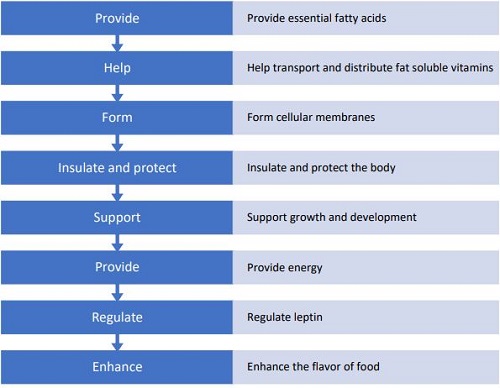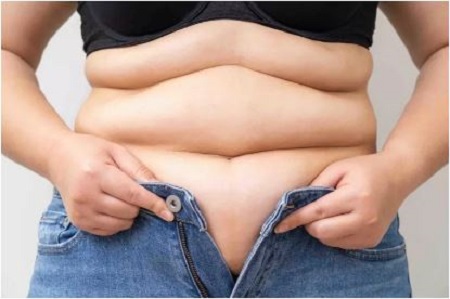What Is Visceral Body Fat?
How to avoid the hidden dangers of visceral body fat.
The impact on inflammation, metabolism, diabetes, cardiovascular health.
Learn how to combat visceral body fat or deep belly fat for healthier lifestyle.
You Get Pills or Talk But Never a Solution

The Unseen Hidden Fat Dangers Of Visceral Body Fat.
Do you feel stressed, overwhelmed, exhausted and on edge?
Struggling with belly fat and unable to shed those pounds?
Are you dealing with gut inflammation or digestive issues?
When you feel like your life support is turned off...
And you can’t sleep or figure out how to get back to self-care bliss.
It’s time to step back and look for a gut inflammation shift.
Visceral fat and why it is called the hidden deep belly fat?
Adipose tissue is not distributed uniformly throughout our body.
While there are different types of body fat.
One specific type is visceral fat.
Visceral fat has more health risks than subcutaneous fat.
How to Reduce Visceral Fat or Get Rid of Deep Belly Fat?
Did you know only 7-8% of the population is metabolically healthy?
(According to recent study by the American College of Cardiology).
Small amount of fat is an essential part of a healthy, balanced diet.
Fat is a source of essential fatty acids, which our body cannot make itself.
Dietary fat is a source of energy; functions as building blocks of our body.
Fat helps our body absorb vitamin A, vitamin D and vitamin E…
These vitamins are fat-soluble.
This means they can only be absorbed with the help of fats.

What Makes Visceral Body Fat More Dangerous?
Let’s explore the real hidden health dangers associated with visceral fat.
Including visceral fat impact on:
- Inflammation
- Metabolism
- Diabetes
- Cardiovascular health
When it comes to body fat distribution.
The fat stored deep in the belly is the most hazardous.
Known as visceral body fat, hidden fat, or deep belly fat.
The Scary Truth About Visceral Body Fat
Visceral fat wraps around vital organs:
- Stomach
- Liver
- Intestines
While visceral fat accounts for only a fraction of total fat in the body.
It is more concerning than the fat stored underneath skin (subcutaneous fat).
Recent scientific findings highlight detrimental effects of visceral body fat.
A larger waist size is strongly associated with increased risks of heart disease.
Why Is Visceral Body Fat Comparable To High Blood Pressure and Smoking?

People with excess belly fat are at higher risk of heart attacks and strokes.
A leading causes of death in people with diabetes.
Visceral fat impairs the body’s ability to use insulin effectively.
Leading to insulin resistance and contributing to certain types of cancers.
To combat the risks associated with deep belly fat.
It’s essential to understand your own susceptibility.
People tend to accumulate extra weight in different areas of their bodies.
This includes all over the body:
- On hips
- Thighs
- Middle and waist
Recent research has highlighted significance of fat distribution.
Revealing fat concentrated within the belly is particularly harmful.
Even in otherwise healthy people.
Genetics do play a role in body shape.
But lifestyle, diet and exercise can help reduce excessive fat.
Especially accumulation around the waistline.
Monitor calorie intake, especially food high in saturated fat and calories.
This can help stop obesity and limit buildup of deep belly fat.
The American Diabetes Association (ADA)
Recommends keeping total fat intake to 20-30% of total calories.
Limiting saturated fat to less than 7%.
And avoiding harmful trans fats.
Choose healthier food choices:
- Natural yogurt
- Lean cuts of meat
- Poultry
- Heart healthy organic butter
- Extra virgin olive oil or coconut oil
Can significantly reduce saturated fat consumption.
While diet is crucial, exercise plays a vital role in combating deep belly fat.
Studies have consistently shown physical activity is beneficial.
Regular exercise help reduce accumulation of visceral fat.
Combining aerobic exercise for cardiovascular health.
Including basic strength training or resistance exercises offer the best results.
Moderate-intensity aerobic exercise, such as brisk walking for 30 minutes.
Five days a week is ideal for cardiovascular and lymphatic health.
Combined with strength training for major muscle groups 3 times a week.
This is recommended by the ADA.
Why is Visceral Body Fat More Harmful to Health than Subcutaneous Fat?

Where is Visceral Body Fat Stored in the Body?
Adipose tissue is not all the same.
Visceral body fat is more harmful than subcutaneous:
- Inflammation
- Metabolic
- Diabetes
- Cardiovascular
Fat stored deep in belly is most dangerous fat of all.
Visceral body fat, known as hidden fat or deep belly fat.
Is stored deep inside the belly, wrapped around:
- Stomach
- Vital organs
- Liver
- Intestines
Visceral fat consists of one tenth of all fat stored in the body.
Most fat is stored underneath the skin, known as subcutaneous fat.
In this article, we will find out how to get rid of deep belly fat.
People can carry extra weight in different places on the body:
- All over
- On hips and thighs
- Around middle and waist
Years ago, we did not know where we carry extra weight matters.
Now we know it does and recommend a detox diet for health benefits.
How Does Visceral Body Fat Impact Weight, Inflammation and Metabolism?
How Does Visceral Body Fat Contribute to Insulin Resistance?
Scientists have found that one place within the belly is most harmful.
It is worse for your health than fat anywhere else in the body.
In fact, a large waist size makes you more likely to get heart disease.
It is just as harmful for your heart as high blood pressure and smoking.
Fat around the belly makes you more likely to have a heart attack.
It also makes you more likely to have a stroke.
What is the Connection Between Visceral Body Fat and Diabetes?

These are the leading causes of death in diabetes.
This type of fat makes it hard for your body to use its own insulin
This relates to insulin resistance.
And, it may even lead to certain cancers.
Read on to learn more about belly fat.
There are steps you can take to avoid gaining weight around your middle.
Understand your risk associated with visceral fat.
Our bodies have fat just under the skin.
But there is another layer of fat that is deeper.
This dangerous fat is called visceral fat.
This is deep within a cavity in the belly.
It surrounds the vital organs of the body:
- Stomach
- Liver
- Intestines
In fact, this fat is very close to the liver.
It is so close, the liver can turn it into cholesterol.
From there, this fat goes through the bloodstream.
It may collect along the walls of the arteries.
This result is arteries get hard and narrow called atherosclerosis.
That’s why its crucial to test your liver and detox liver for health.
You may be more likely to get health problems from deep belly fat:
- You waist is more than 40 inches if you are a woman
- Your waist is more than 35 inches if you are a man
And it is not just people with diabetes who are at risk.
Deep belly fat is a problem even in healthy adults.
Because deep belly fat makes it harder for the body to use insulin.
This often leads to type 2 diabetes.
Here is what we found in one study at Johns Hopkins.
Take a man with a big waist size (over 40 inches).
Compare him to a man with a small waist size 29 – 34 inches.
The man with big waist is 12 times more likely to have diabetes.
How to Know the source of Visceral Body Fat or Deep Belly Fat.

Our genes certainly play a part in visceral fat and our body shape.
But we can still do a lot to stop a bulging waist.
And the health risks that come with it.
Diet and exercise are two steps we can control.
And, these determine how much fat builds up in our bodies.
Watch how much you eat of foods high in fat and calories.
These type of foods can lead to obesity.
For many, this extra weight goes to the stomach area.
You should keep overall fat and deep belly fat at bay.
The American Diabetes Association (ADA) suggests you:
- Keep total fat to 20 to 30 percent of total calories
- Keep saturated fat to less than 7 percent
- Limit or avoid harmful trans fats
Here is an example.
What if your diet has you eat has a certain number of calories a day
Lets say it is 2,000 calories.
Then, you would eat no more than:
- 700 calories (about 77 grams) of fat
- 140 calories (about 15 grams) of saturated fat
There are many common sources of saturated fats:
- Foods from animals (dairy and meats)
- Some plants (coconut and palm oils)
- Packaged snacks and desserts
To lower your intake of these fats:
- Stick with natural yogurt
- Lean cuts of meat and poultry, no skin
- Heart healthy organic butter
- Pure extra virgin olive oil or coconut oils
Visceral Fat and Why Its Also Called Hidden Deep Belly Fat?

You Can Find Out How Much Fat Is In Most Packaged and Fast Foods.
Be sure to check the nutrition facts panel.
It lists how much total fat and saturated fat are in the food.
Daily exercise helps to keep belly fat at bay.
But, diet is only part of the visceral fat equation...
Researchers have found that exercise plays a key role.
Exercise or physical activity reduces the build-up of belly fat.
Here is what some studies have found.
Diet alone is not enough to reduce deep belly fat.
A study looked at the effect of diet and exercise.
The study had 33 older women take part in it.
They were all obese and had type 2 diabetes.
It looked at 3 ways to lose weight:
- Low calorie diet
- Walking for 50 minutes 3 times a week
- Daily exercise or just walking
This study lasted for 14 weeks.
The low-calorie diet did not work on belly fat.
But, diet plus exercise (walking) did.
And, just the exercise (walking) worked too.
The two groups lost about the same amount of belly fat.
Exercise is key to reduce and lose belly fat.
Here is what the first major study found.
Published in 2005 in the Journal of Applied Physiology.
There were 175 people who took part in this first study.
These were people who did not do exercise.
They were all overweight.
They were put into 1 of 4 groups:
- No exercise group
- 1 of 3 exercise groups
After 6 months, there were differences in belly fat.
Those in the no exercise group gained more belly fat.
But not the people in 1 of 3 exercise groups.
They were able to reduce or lose belly fat...
Doing a moderate type of exercise works best.
The scientists in this last study found something else.
Doing a moderate type of exercise worked well.
This was a brisk 30 minute walk for 6 days a week.
It was enough to stop more build up of belly fat.
Doing more, not harder exercise worked best to lose belly fat.
These results all suggest a clear message.
Exercise is a key part of fat loss and losing belly fat.
Include both aerobic for cardiovascular.
And physical activity or resistance exercise.
Exercise is the key to fighting deep belly fat.
But, what is the best exercise plan?
According to experts, the best way is to combine two types:
- Aerobic exercise is best for cardiovascular
- Strength training or resistance training
A 6-month study was done at Johns Hopkins...
The people who took part in it were 104 men and women.
They walked on a treadmill or cycled, plus they did strength training.
They lost an average of less than 5 pounds of weight on the scale.
But, they lost about 18 percent of their belly fat.
This is measured using magnetic resonance imaging (MRI).
Those in the no exercise group lost no belly fat.
And, many who lost belly fat had more health benefits.
They reversed a set of risks of metabolic syndrome:
- Blood pressure
- Obesity
- Insulin resistance
How Does Visceral Fat Affect Cardiovascular Health?

Can Visceral Fat Increase the Risk of Certain Cancers?
This lessens their risk of heart disease, stroke, and type 2 diabetes.
The ADA has a plan for you if you have diabetes.
It is based on what we now know about both types of exercise.
They recommend:
- Moderate intensity aerobic exercise for 30 minutes, 5 days a week
- Strength training 3 times a week that targets all major muscle groups
Check with your healthcare provider before you start a new exercise plan.
See your doctor first if you have not exercised before.
Visceral Body Fat Conclusion

The message on visceral body fat and belly fat is clear.
Fat that builds up around the middle puts you at risk.
It makes you more likely to get heart disease and other health problems.
The good news is we now have proven ways to avoid these risks.
If you do the right kinds of exercise, on a regular basis, it helps.
You can lose the bulge around waist and more harmful, deep belly fat.
Tips to reduce visceral fat or hidden deep belly fat.
Know your waist size.
If you are overweight, be sure your doctor measures your waist size.
This should be done at each office visit, along with your weight.
It will help determine if you are at risk from deep belly fat.
Add aerobic exercise as part of your way of life.
This may be the most important step you can do.
It reduces the fat around our belly and stretch marks.
Keep in mind moderate exercise works the best.
To gauge intensity, use the talk test.
While you are exercising:
- You should be able to talk comfortably
- You should not be able to belt out a song
Then you will know you are doing moderate exercise.
Include daily strength training such as weight lifting.
Not everyone goes to a gym.
If you do not, practise safe exercises you can do at home.
Limit eating too much saturated fat in your diet.
Take a closer look at the nutrition label.
It tells how much total and saturated fat is in a food.
Change your daily menus to eat more:
- Fresh fruits and vegetables
- Fish or vegetable proteins
- Wholefoods, seeds and nuts
These are all naturally low in fat.
Use lower fat cooking methods, broil or bake instead of frying.
It’s important to consult with healthcare provider before new exercise plan.
Especially if you have not been physically active in the past.
By following a daily exercise routine and healthier lifestyle.
You can effectively combat deep belly fat.
Regular exercise and diet helps you shed excess fat around your waist.
And reduce the harmful damaging effects of visceral body fat.
Here’s a link to cellulite the next related article you may want to check out.
 Can you lose weight eating anything you want? Yes, it is absolutely possible to lose weight and eat whatever you want.
Can you lose weight eating anything you want? Yes, it is absolutely possible to lose weight and eat whatever you want.


